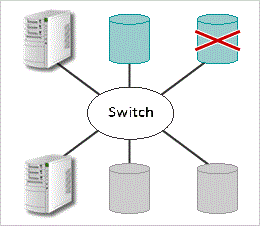NEC SAN fc Switches
The WB-series switches are compact, high performance and low-cost Fiber Channel Switches with improved connectivity with storage and servers.
Fiber channel switches can be used to establish high-speed connections between servers and storage devices to build Storage Area Networks (SANs) without SPOF (Single Point of Failure).
For example, Fiber Channel Switches facilitate the construction of systems for the following situations. (1) connect to the server with some FC ports to various storage devices. (2) Connect several servers to a storage device.
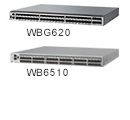
Configuration of WB Series with Example
Configuration example 1: Expand server ports
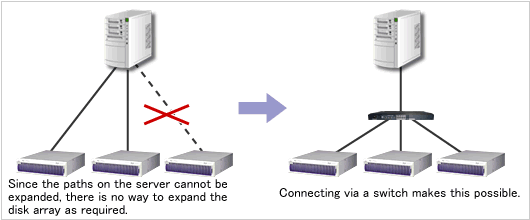
Configuration example 2: Expand storage ports
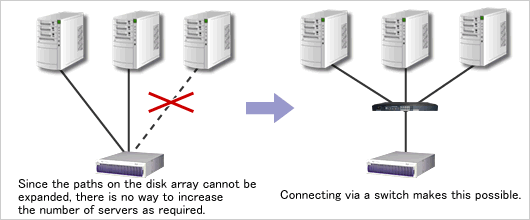
Main functions
High speed switch function (cut through)
This function allows the switch to perform bidirectional data transmission simultaneously at 32 Gbps (* 1) / 16 Gbps (* 2) / 8Gbps / 4Gbps. The transmission between ports is not incompatible with each other, so simultaneous communication between n: n ports is possible.
* 1 32 Gbps for WBG620.
* 2 16 Gbps for WB6510, WB6505 and WBG620.
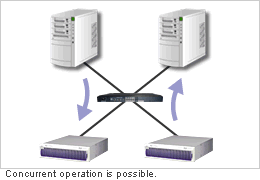
Routing function without Single Point of Failure
When connecting a server and a storage through two or more fiber channel switches, it is easy to perform a two-way configuration without SPOF (Single Point Of Failure).

Zoning function to protect the data
Switch ports can be divided into specific zones. Access between different zones is denied through this function, which limits access to unnecessary data and protects important data.
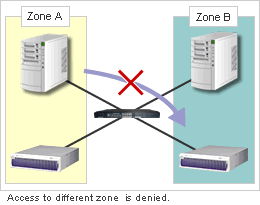
Comparison between Switch and HUB
Unlike HUBs, switches support multiple node / complex applications cluster and allow flexible expansion of the system for scalability.
HUB connection
All devices must be connected and their addresses must be managed.
Resetting the operation is necessary for each removal / addition nodes.
The failure affects the performance of all the nodes.
With the increase in the number of ports, the conflict between the ports increases, resulting in performance degradation.
Switch connection
The switch manages the addresses.
The nodes are added or deleted separately for each port.
The failed port is separated from the other nodes, which eliminates the impact on its performance.
More ports and higher transfer rates.
